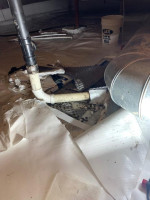Hops
|
Amount
|
Variety
|
Cost
|
Type
|
AA
|
Use
|
Time
|
IBU
|
Bill %
|
|
2 oz |
Strisselspalter2 oz Strisselspalter Hops |
|
Pellet |
3.5 |
Boil
|
60 min |
21.03 |
50% |
|
1 oz |
Strisselspalter1 oz Strisselspalter Hops |
|
Pellet |
3.5 |
Boil
|
10 min |
3.81 |
25% |
|
1 oz |
Strisselspalter1 oz Strisselspalter Hops |
|
Pellet |
3.5 |
Boil
|
5 min |
2.1 |
25% |
|
4 oz
/ $ 0.00
|
Hops Summary
|
Amount
|
Variety
|
Cost
|
IBU
|
Bill %
|
|
4 oz |
Strisselspalter (Pellet) 3.9999999908503 oz Strisselspalter (Pellet) Hops |
|
26.94 |
100% |
|
4 oz
/ $ 0.00
|
Mash Guidelines
|
Amount
|
Description
|
Type
|
Start Temp
|
Target Temp
|
Time
|
|
5.81 gal |
Single Infusion |
Infusion |
-- |
152 °F |
90 min |
|
4.26 gal |
Batch Sparge |
Sparge |
-- |
170 °F |
5 min |
Starting Mash Thickness:
1.5 qt/lb
|
Target Water Profile
Balanced Profile
| Ca+2 |
Mg+2 |
Na+ |
Cl- |
SO4-2 |
HCO3- |
|
80 |
5 |
25 |
75 |
80 |
100 |
Rice Hulls:
Add 1lb for every 5 lbs of malt to help with heat distribution.
Pilsner Malt:
Protein rest (122-131F 15 min)
Belgian Wheat:
Beta-glucanase rest @ 97-113 F (20 min)
Followed by Protein Rest @ 122F (10 min)
Bring up to 152F and add to mash.
CaraMunich Malt:
Add after mash-out, during vorlauf.
Cane Sugar:
Add to boil kettle.
Step Mash
122-131 10-20 min
142-146
154-164
Add CaraMunich malt after mash-out, during vorlauf.
Add Cane Sugar to boil kettle.
Raise temperature to 80◦F over the course of the fermentation. If beer fails to attenuate enough, add a secondary yeast to dry out beer further:
Wyeast 1056 American Ale
Condition at least 4 weeks.
|
|
Mash Chemistry and Brewing Water Calculator
|
Notes
Overall Impression:
Most commonly, a pale, refreshing, highly-attenuated, moderately-bitter, moderate-strength Belgian ale with a very dry finish. Typically, highly carbonated and using non-barley cereal grains and optional spices for complexity, as complements the expressive yeast character that is fruity, spicy, and not overly phenolic. Less common variations include both lower-alcohol and higher-alcohol products, as well as darker versions with additional malt character.
Aroma:
Quite aromatic, with fruity, spicy, and hoppy characteristics evident. The esters can be high (moderate to high), and are often reminiscent of citrus fruits such as oranges or lemons. The hops are low to moderate and are often spicy, floral, earthy, or fruity. Stronger versions can have a soft, spicy alcohol note (low intensity). Spicy notes are typically peppery rather than clove-like, and can be up to moderately-strong (typically yeast-derived). Subtle, complementary herb or spice additions are allowable, but should not dominate. The malt character is typically slightly grainy in character and low in intensity. Darker and stronger versions will have more noticeable malt, with darker versions taking characteristics associated with grains of that color (toasty, biscuity, caramelly, chocolate, etc.). In versions where sourness is present instead of bitterness, some of the sour character can be detected (low to moderate).
Appearance:
Pale versions are often a distinctive pale orange but may be pale golden to amber in color (gold to amber-gold is most common). Darker versions may run from copper to dark brown. Long-lasting, dense, rocky white to ivory head resulting in characteristic Belgian lace on the glass as it fades. Clarity is poor to good, though haze is not unexpected in this type of unfiltered beer. Effervescent.
Flavor:
Medium-low to medium-high fruity and spicy flavors, supported by a low to medium soft malt character, often with some grainy flavors. Bitterness is typically moderate to high, although sourness can be present in place of bitterness (both should not be strong flavors at the same time). Attenuation is extremely high, which gives a characteristic dry finish essential to the style; a Saison should never finish sweet. The fruity character is frequently citrusy (orange or lemon), and the spices are typically peppery. Allow for a range of balance in the fruity-spicy characteristics; this is often driven by the yeast selection. Hop flavor is low to moderate, and generally spicy or earthy in character. The balance is towards the fruity, spicy, hoppy character, with any bitterness or sourness not overwhelming these flavors. Darker versions will have more malt character, with a range of flavors derived from darker malts (toasty, bready, biscuity, chocolate, etc.) that support the fruity-spicy character of the beer (roasted flavors are not typical). Stronger versions will have more malt flavor in general, as well as a light alcohol impression. Herbs and spices are completely optional, but if present should be used in moderation and not detract from the yeast character. The finish is very dry and the aftertaste is typically bitter and spicy. The hop bitterness can be restrained, although it can seem accentuated due to the high attenuation levels.
Mouthfeel: Light to medium body. Alcohol sensation varies with strength, from none in table version to light in standard versions, to moderate in super versions. However, any warming character should be low. Very high carbonation with an effervescent quality. There is enough prickly acidity on the tongue to balance the very dry finish. In versions with sourness, a low to moderate tart character can add a refreshing bite, but not be puckering (optional).
Comments:
Variations exist in strength and color, but they all have similar characteristics and balance, in particularly the refreshing, highly-attenuated, dry character with high carbonation. There is no correlation between strength and color. The balance can change somewhat with strength and color variations, but the family resemblance to the original artisanal ale should be evident. Pale versions are likely to be bitterer and have more hop character, while darker versions tend to have more malt character and sweetness, yielding a more balanced presentation. Stronger versions often will have more malt flavor, richness, and body simply due to their higher gravity. Although they tend to be very well-attenuated, they may not be perceived to be as dry as standard-strength saisons due to their strength. The Saison yeast character is a must, although maltier and richer versions will tend to mask this character more. Often called Farmhouse ales in the US, but this term is not common in Europe where they are simply part of a larger grouping of artisanal ales.
History:
A provision ale originally brewed in Wallonia, the French-speaking part of Belgium, for consumption during the active farming season. Originally a lower-alcohol product so as to not debilitate field workers, but tavern-strength products also existed. Higher-strength and different-colored products appeared after WWII. The best known modern saison, Saison Dupont, was first produced in the 1920s. Originally a rustic, artisanal ale made with local farm-produced ingredients, it is now brewed mostly in larger breweries yet retains the image of its humble origins.
Characteristic Ingredients:
Not typically spiced, with the yeast, hops and grain providing the character; but spices are allowed if they provide a complementary character. Continental base malts are typical, but the grist frequently contains other grains such as wheat, oats, rye, or spelt. Adjuncts such as sugar and honey can also serve to add complexity and dry out the beer. Darker versions will typically use richer, darker malts, but not typically roasted types. Saazer-type, Styrian or East Kent Golding hops are commonly used. A wide range of herbs or spices can add complexity and uniqueness, but should always meld well with the yeast and hop character. Brettanomyces is not typical for this style; Saisons with Brett should be entered in the American Wild Ale category.
Style Comparison:
At standard strengths and pale color (the most common variety), like a more highly-attenuated, hoppy, and bitter Belgian blond ale with a stronger yeast character. At super strength and pale color, like a Belgian tripel, but often with more of a grainy, rustic quality and sometimes with a spicier yeast character.
Entry Instructions:
The entrant must specify the strength (table, standard, super) and the color (pale, dark).
Vital Statistics:
OG: 1.048 – 1.065 (standard)
FG: 1.002 – 1.008 (standard)
IBUs: 20 – 35
SRM: 5 – 14 (pale); 15 – 22 (dark)
ABV: 3.5 – 5.0% (table); 5.0 – 7.0% (standard); 7.0 – 9.5% (super)
Commercial Examples :
Ellezelloise Saison, Fantôme Saison, Lefebvre Saison 1900, Saison Dupont Vieille Provision, Saison de Pipaix, Saison Regal, Saison Voisin, Boulevard Tank 7 Farmhouse Ale
Tags:
standard-strength, pale-color, top-fermented, western-Europe, traditional-style, bitter

Last Updated and Sharing

- Public: Yup, Shared
- Last Updated: 2024-11-14 22:23 UTC
For quick copying and pasting to a text based forum or email.
Click the Download as HTML file button below.
Recipe costs can be adjusted by changing the batch size. They won't be saved but will give you an idea of costs if your final yield was different.
|
Cost $ |
Cost % |
| Fermentables |
$ |
|
Steeping Grains
(Extract Only) |
$ |
|
| Hops |
$ |
|
| Yeast |
$ |
|
| Other |
$ |
|
| Cost Per Barrel |
$ 0.00 |
|
| Cost Per Pint |
$ 0.00 |
|
| Total Cost |
$ 0.00 |
|
Discussion about this recipe:
